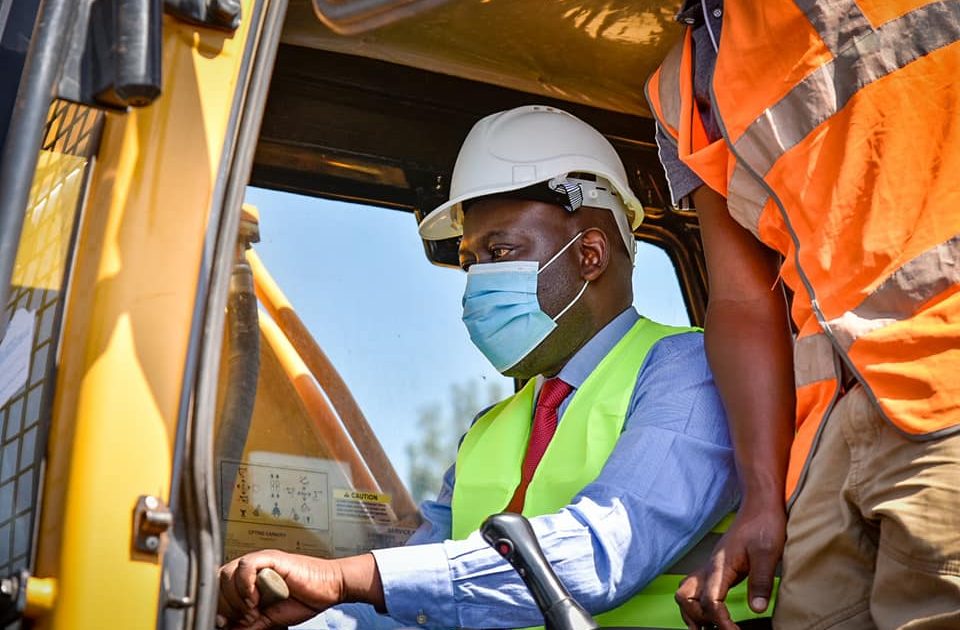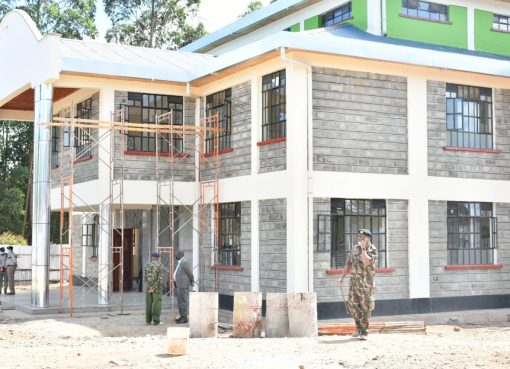The fight against Covid-19 pandemic has received a major boost after the County Government of Nakuru embarked on construction of a new plant at the Level 5 Teaching and Referral Hospital with a capacity of processing 2,000 litres of oxygen per minute.
The facility will supplement the 1,200 tonnes capacity per minute plant at the hospital which is jointly run under the Public-Private Partnerships by Hewa Tele Limited and the devolved unit’s Department of Health.
Deputy Governor Dr. Eric Korir said the old Hewa Tele oxygen processing plant was overwhelmed by a rising demand in the county as the number of Covid-19 cases soars.
The referral facility serves Nakuru and more than five other neighbouring counties of Baringo, Samburu, Kericho, Narok, Nyandarua and Bomet.
Dr. Korir noted that the old plant was also supplying oxygen to private facilities in the region.
Speaking during the ground breaking ceremony for the project, the Deputy Governor who was accompanied by County Executive Committee Member for Health Dr. Zachary Gichuki said following the outbreak of Covid-19, the Level 5 hospital required an average of 150 to 160 oxygen cylinders of 60 kilograms each, every day, an increase from 25 to 30 before the pandemic.
“The plant will have a 660kva standby generator to ensure uninterruptible power supply in the event of a power blackout. With this facility, we will be able to provide oxygen to other facilities in Nakuru and other neighbouring counties. We are the second county to have this plant in the region after Moi Teaching and Referral Hospital in Eldoret,” added Dr. Korir.
At the hospital, the Intensive Care Unit (ICU), the High Dependency Unit (HDU), 10 theatres and the maternity wing are supplied with piped oxygen, while the outpatient unit has standby oxygen cylinders.
“The new plant will be designed to more than double Nakuru’s current production of medical oxygen which will be sufficient oxygen for our public and private hospitals. Even as we build capacity we understand that because of the nature of the disease, it is not enough to have ICUs and ventilators if you do not have oxygen,” stated Dr. Korir.
Nakuru Level 5 Hospital has an automatic oxygen concentrator launched by President Uhuru Kenyatta, under the Managed Equipment Services, in a partnership between the county and national governments in 2016.
But since oxygen at the plant is not packaged into cylinders, the management is forced to rely on medical oxygen from Hewa Tele plant.
Dr. Korir observed that health facilities in neighbouring counties were also reporting a worrisome shortage of oxygen.
“The new plant will be equipped with the latest technology. At Hewa Tele we compliment the staff for their dedication and hard work. It is not easy for at times, they process oxygen at night to meet the high demand. For example, one cylinder of 60 litres takes an average of 22 minutes to be filled up,” he added.
Dr. Gichuki observed that the spike in demand for oxygen by coronavirus cases had a direct impact on other non-corona virus patients and could strain oxygen resources for everyone who relies on it inside and outside medical facilities.
“Oxygen is a key element in response to the pandemic as patients diagnosed with the coronavirus might need supplemental oxygen because the infection causes viral pneumonia that paralyses the lungs.
If you give most Covid-19 patients oxygen early enough then you stop them from progressing into the most critical stage where they require ventilation. Patients in Intensive Care Unit (ICU) and High Dependency Unit (HDU) require oxygen to stay alive,” noted Dr. Gichuki.
The CEC expressed concern that Nakuru had recorded an upsurge of new Covid infections with 90 patients having tested positive for the virus in the previous 24 hours. Over the same period, he said 10 deaths had been reported with eight patients in the Intensive Care Unit and another 83 on supplemental oxygen.
In February this year Health Cabinet Secretary Mutahi Kagwe admitted that the availability of oxygen remains low in public health facilities at 16 per cent, and where available, the supply is not optimal due to lack of necessary distribution and delivery infrastructure.
By the start of April this year, he revealed the country’s demand for oxygen for Covid-19-related emergency medical care had more than doubled.
“The situation now is that the gas manufacturing industry is completely stretched. If we go any further than that, immediate steps will have to be taken,” the CS warned.
Oxygen, which was classified by WHO in 2017 as an essential medicine for the treatment of hypoxemia (low oxygen levels in the blood), was finally listed as such in the 2019 Kenya Essential Medicines List, as one of the six inhalational medicines that should be available from dispensary level.
By Jane Ngugi and Dennis Rasto





